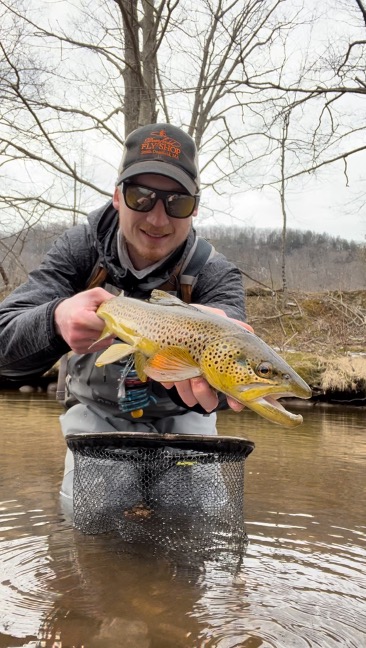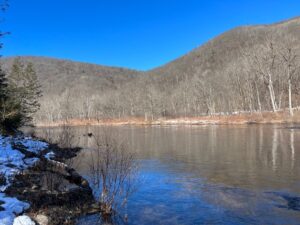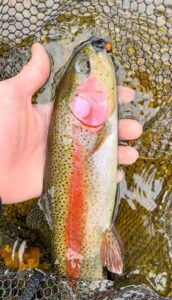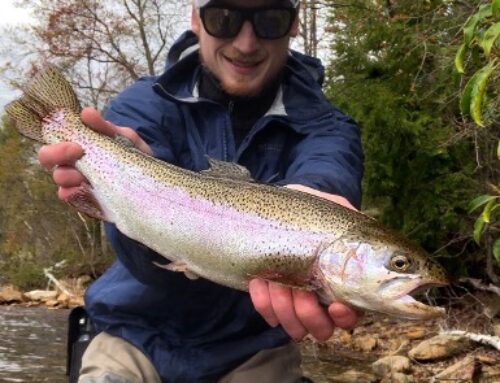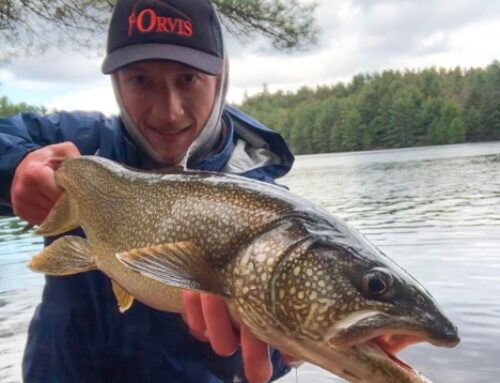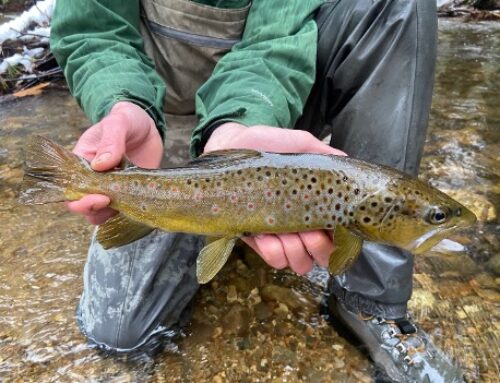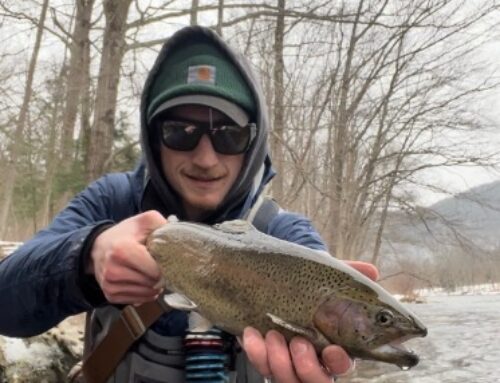If you can believe it, spring is right around the corner and it’s already time to start thinking about warmer weather tactics!
The Deerfield has already been fishing very productively through the end of winter and even more so now that many fish are beginning to move out of wintering positions. You’ll certainly still find plenty of fish relating to logical cold weather holds along slow & deep current margins, however, shallower & faster water will continue to come more into play as we enter spring. With this transition comes one of the year’s best windows to lock horns with a top percentile brown trout as these fish begin to pull bellies off bottom in pursuit of high-value forage options. Suckers, sculpin and wild rainbow trout are all spring spawners; a time when mating fish, their eggs and subsequent fry are vulnerable to large browns looking to put the feed bag on after a winter of modest pickings.
With so many adult forage fish occupying the system with things other than self-preservation on their minds, many larger fish are keen on stripped and swung streamer presentations. Remember that the water is still cold and spawning activity takes place directly on the bottom so getting presentations to depth with heavy flies & heavier sinking lines will be important. Tightlined jig streamers are also effective, especially for imitating weak swimming sculpin which cling to bottom, however, selections like Galloup’s zoo cougar are excellent options for imitating sculpin accidentally flushed up into the water column; an opportunity that most larger brown trout will attack aggressively.
In terms of nymphal imitations, the regular fare will go well while we wait for the significant insect movement that comes with spring’s first hatches. Pat’s rubber legs & larger stones; pheasant tails, copper johns, d-rib bugs and the like for small winter stoneflies; midges & leeches are all great options. Also keep in mind that there are an unbelievable amount of eggs and aquatic worms in the system around this time and any box is all but incomplete without a couple such options. Is it really junk if that’s what they’re eating?
Believe it or not, there’s already been a couple days with the option to take fish from the surface. Lower flows (between 125-350 cfs) are key for such opportunities where fish are generally congregating in slower pools with significant depth transition. Risers are taking midges and the odd BWO, however, will become increasingly keen on olives as they become more prevalent. Emergers like the wicked pissah and mole fly are winning tickets, but fish taking larger point attractors like parachutes and sparkle duns has not been unheard of.
Western Massachusetts can be very windy this time of year, which can present significant challenges, especially on bigger, more exposed rivers like the Connecticut, Deerfield, Westfield, & Millers. Positioning yourself along points of elevation which block the wind and keeping casts as low to the water as possible will do a lot to fight gusts. In some conditions, you may want to consider moving into smaller tributary creeks which are usually significantly less affected by wind than the larger systems. For additional tips, check out our YouTube channel (@deerfieldflyshop) for a more in-depth segment on beating the wind.
As for the Swift River, things are a little bit wacky below Quabbin for the moment. As this report is being written, the flow is a whopping 720 cfs, more than ten times its average flow. We always hesitate to use the word unfishable, but conditions are about as close as they come right now. One’s best—and perhaps only bet—will be to remain on the bank slotting and fish with extremely heavy flies (like a jigged streamer tied off of one of our 1/8 oz. Wapsi jigs). If you do decide to give it a try, we firmly advise that you do not enter the water as there are very few if any areas one can safely get in with such intense flows. Looking to the future, such high flows have historically started to come down by April-May, often yielding exciting opportunities to pick up a landlocked salmon, lake trout, and/or big smallmouth spilled in from the Quabbin Reservoir above.
As for the area’s smaller streams and creeks, the seasonal transition is well underway. The lion’s share of both wild and holdover fish winter in deep plunge pools before redistributing across creek systems around this time, often in pursuit of forage options resulting from sucker and sculpin spawns like their big-water counterparts. Runoff and early season rain significantly affect creeks, but they tend to come back down to normal levels much faster. In higher flows, small streamers and contact presentations will go well and fish are already pretty keen to smaller surface imitations when flows are lower. Of course, many of the smaller rivers and streams will also be stocked soon, so keep your eyes on the stocking status map at mass.gov/info-details/trout-stocking-report.
Finally, for those big game chasers, the northern pike spawning window has largely closed with water temps creeping into the 40s. Post-spawn opportunities should not be ignored. Pike move on from their spawning grounds quickly after mating and return directly to their traditional hunting grounds. Look to target structured areas of significant depth transition while aquatic vegetation continues to grow back in and remember that presentations don’t always need to be massive. When fishing larger patterns, it’s often a clever idea to have a rod rigged with something smaller to be thrown in immediately after an uncommitted follow on a larger fly.
Off the water, we have several classes and events coming up like our our Deerfield River Flybox Class (March 17), Bugs & Beers at Progression Brewing Co. (March 20), & the Women’s Spring Retreat (May 3-4). For registration and additional information visit our website at deerfieldflyshop.com or feel free to give us a call. We’ll also have more clinics, classes and events coming soon as well as an online shop, so keep eyes peeled, and good luck on the water in the coming weeks!


